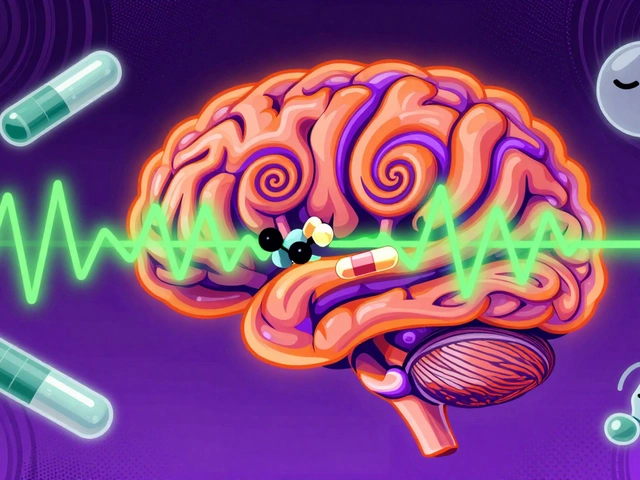Nausea: Quick Relief, Causes, and When to Get Help
Nausea is that queasy, upset-stomach feeling that can ruin your day. It can come from food, motion, pregnancy, infections, meds, or just a stressful day. Most of the time it’s short-lived and fixable with simple moves. Below are clear, useful tips you can try now and signs that mean you should see a clinician.
Quick relief you can try right now
Small changes often help fast. Try sipping plain water or an electrolyte drink in small amounts—big gulps can make nausea worse. Ginger works for many people: ginger tea, candied ginger, or ginger chews can calm the stomach. Peppermint tea or sucking a peppermint candy can also ease symptoms for some.
Move slowly and sit upright. Lying flat can make the feeling worse. If motion causes your nausea, focus on the horizon, sit in the front seat, or use a wrist acupressure band (sea-sickness bands). Avoid heavy, greasy, or spicy foods until your stomach settles. Bland snacks like crackers, toast, or plain rice are usually safer.
Control smells. Strong odors often trigger nausea—open a window, turn on a fan, or step outside for a few minutes. Try deep, slow breathing: inhale through your nose and exhale through your mouth for several cycles. That calms your nervous system and reduces queasiness in many cases.
Over-the-counter options can help too. Antihistamines like dimenhydrinate or meclizine are commonly used for motion sickness. For more severe cases, prescription medicines such as ondansetron or promethazine are options your doctor may suggest. Always follow dosing instructions and check for interactions with other meds you take.
When to see a doctor
Most nausea passes, but get medical help if you have any of these: persistent vomiting for more than 24 hours, signs of dehydration (dry mouth, little or no urine, lightheadedness), severe abdominal pain, high fever, bloody vomit, or confusion. Also see a doctor if nausea starts after a new medication—your provider may adjust the dose or switch drugs.
If you’re pregnant and nausea stops you from eating or drinking, contact your healthcare provider. For pregnancy-related nausea, low-dose vitamin B6 and doxylamine are common first steps, but always discuss medicines with your clinician first. Children, older adults, and people with chronic illnesses should get prompt advice when nausea is severe.
Want to prevent future episodes? Keep a simple routine: eat small regular meals, stay hydrated, avoid known triggers (strong smells, certain foods), and manage stress. If nausea is recurring or affects daily life, track when it happens and what you ate—this helps your provider find the cause faster.
If you need more details on specific medicines or tips for special situations—like travel sickness or pregnancy—check our related articles on anti-nausea drugs and safe home remedies. Quick fixes work most of the time, but don’t ignore warning signs. Your gut usually tells you what it needs; listen to it and act when things don’t improve.
Sumatriptan and Nausea: How to Manage This Common Side Effect
In my recent blog post, I discussed the common side effect of nausea when taking Sumatriptan for migraine relief. Many people experience this discomfort, but I've found a few helpful tips to manage it. First, take the medication with food or a full glass of water to reduce stomach irritation. Second, consider using anti-nausea medication alongside Sumatriptan, but always consult with your doctor first. Lastly, practice relaxation techniques such as deep breathing to help alleviate nausea and make the treatment process more comfortable.





